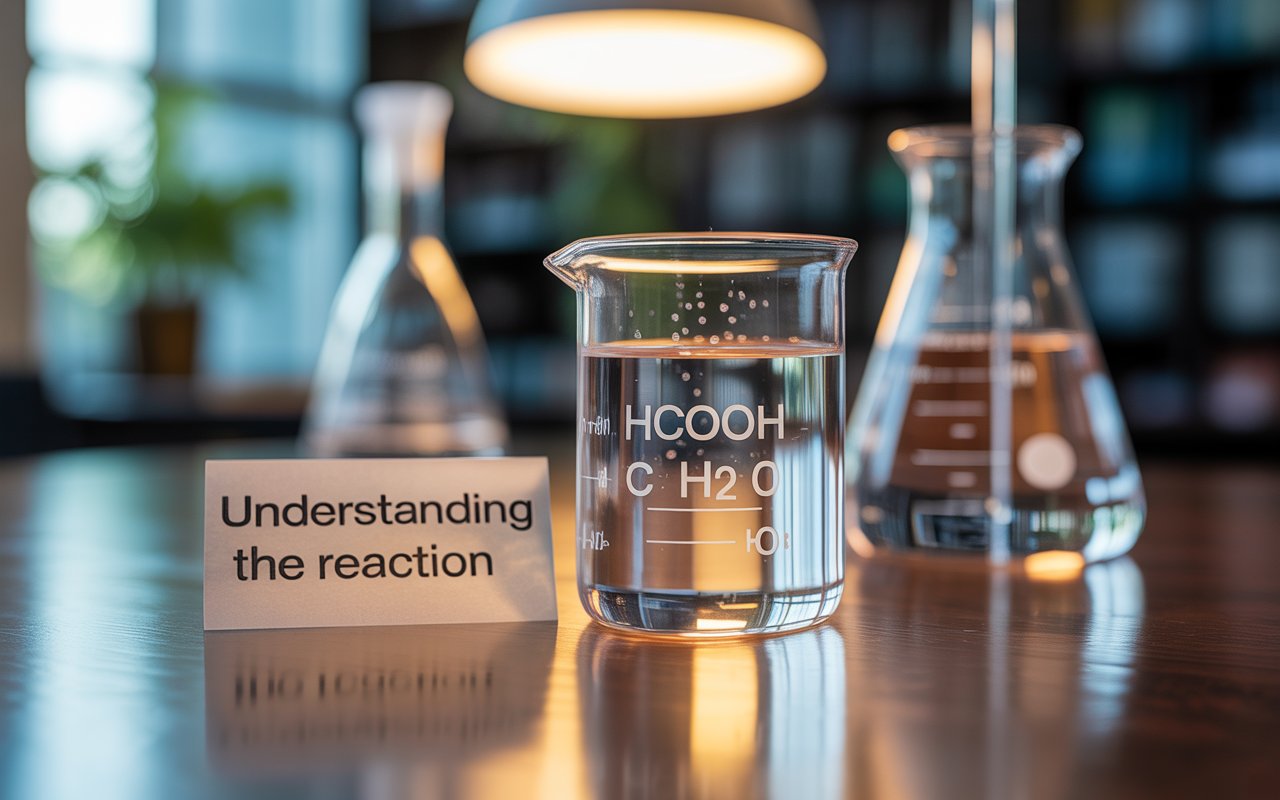Chemical reactions involving simple organic compounds play a critical role in both industrial chemistry and academic research. One such reaction is the interaction between formic acid (HCOOH), ethylene (CH₂=CH₂), and water (H₂O). In this article, we explore how the components of HCOOH CH₂ H₂O interact and their roles, mechanisms, and industrial implications.
What Does HCOOH CH₂ H₂O Represent?
The notation HCOOH CH₂ H₂O refers to a combination of three chemical species:
-
HCOOH (Formic Acid): The simplest carboxylic acid, known for its role in ant stings and industrial processes.
-
CH₂=CH₂ (Ethylene): A fundamental alkene used extensively in polymerization and the chemical industry.
-
H₂O (Water): A universal solvent and participant in many reactions, including hydrolysis, hydration, and acid-base chemistry.
These compounds can interact in various organic reactions, especially in electrophilic addition reactions and esterification.
Chemical Properties of HCOOH, CH₂=CH₂, and H₂O
Before we dive into specific reactions, let’s look at the properties of each:
HCOOH (Formic Acid)
-
Molecular Formula: HCOOH
-
Structure: Contains one carboxylic acid group (-COOH)
-
Properties: Weak acid, soluble in water, pungent smell, corrosive
CH₂=CH₂ (Ethylene)
-
Molecular Formula: C₂H₄
-
Structure: Contains a double bond between two carbon atoms
-
Properties: Colorless gas, highly flammable, used in polymer production
H₂O (Water)
-
Molecular Formula: H₂O
-
Structure: Angular molecule with two hydrogen atoms covalently bonded to one oxygen atom
-
Properties: High polarity, excellent solvent, key role in chemical reactions
Reactions Involving HCOOH CH₂ H₂O
1. Hydration of Ethylene in the Presence of Formic Acid
One possible reaction pathway is the acid-catalyzed hydration of ethylene, using formic acid and water. The general reaction:
CH₂=CH₂ + H₂O → CH₃CH₂OH (ethanol)
Catalyst: HCOOH (Formic acid as a proton donor)
Here’s how the process works:
-
Formic acid provides protons (H⁺), catalyzing the addition of water to the double bond in ethylene.
-
The π bond in ethylene breaks, allowing the formation of a carbocation.
-
Water acts as a nucleophile and attacks the carbocation.
-
A deprotonation step follows, yielding ethanol.
While formic acid is not always the standard catalyst, its acidic nature allows it to act similarly to stronger acids like H₂SO₄ in this reaction.
2. Electrophilic Addition of Formic Acid to Ethylene
Another important reaction is CH₂=CH₂ + HCOOH → HCOOCH₂CH₃ (ethyl formate)
This reaction forms an ester by the addition of formic acid to ethylene, usually under high pressure and in the presence of a catalyst (like a Lewis acid). Ethyl formate has applications as a flavoring agent and in the production of pharmaceuticals.
Industrial Significance of the HCOOH CH₂ H₂O Reaction
The combination of HCOOH CH₂ H₂O has practical implications in several industries:
1. Plastic and Polymer Industry
-
Ethylene is a building block for polyethylene (PE), one of the most widely used plastics.
-
Reactions involving formic acid help modify ethylene-based polymers for enhanced flexibility or biodegradability.
2. Pharmaceuticals
-
Esters like ethyl formate, formed from these compounds, are used as intermediates in drug synthesis.
-
Formic acid serves as a solvent and reagent in active pharmaceutical ingredient (API) production.
3. Green Chemistry
-
Formic acid is considered an environmentally friendly alternative to stronger mineral acids.
-
Water-based reactions reduce the reliance on toxic organic solvents, aligning with sustainable chemistry principles.
Laboratory Conditions and Mechanisms
In a lab setting, controlling conditions is key to achieving the desired product when combining HCOOH CH₂ H₂O.
Key Parameters:
-
Temperature: Moderate heat (50–80°C) is typically needed.
-
Pressure: Elevated pressure helps push gas-phase ethylene into the liquid phase.
-
Catalyst: Acid catalysts (Brønsted or Lewis acids) enhance the electrophilic nature of formic acid and ethylene.
Mechanism (for Electrophilic Addition):
-
Protonation: The ethylene double bond interacts with H⁺ from formic acid.
-
Carbocation Formation: A reactive intermediate is formed.
-
Nucleophilic Attack: The negatively charged part of formic acid (HCOO⁻) bonds with the carbocation.
-
Ester Formation: After rearrangement, an ester like ethyl formate is formed.
Environmental and Safety Aspects
1. Toxicity
-
Formic acid is corrosive and should be handled with gloves and goggles.
-
Ethylene is flammable and forms explosive mixtures with air.
-
Water, while safe, can accelerate exothermic reactions and must be carefully added.
2. Sustainability
Using HCOOH CH₂ H₂O in synthesis can reduce waste and enhance atom economy, which is vital in green chemistry practices. Formic acid, in particular, is being explored as a hydrogen storage medium, contributing to renewable energy technologies.
Research and Advancements
Current research focuses on:
-
Bio-based Formic Acid: Produced from biomass, making the process more sustainable.
-
Catalytic Systems: Developing safer, recyclable catalysts for reactions involving ethylene and formic acid.
-
Selective Synthesis: Designing reaction pathways to obtain specific products like higher alcohols or esters with minimal byproducts.
Real-Life Applications of Products Derived from HCOOH CH₂ H₂O
1. Ethyl Formate
-
Used in: Perfumes, solvents, flavors
-
Smells like: Rum and raspberries
-
Benefit: Biodegradable and less toxic than synthetic solvents
2. Ethanol
-
Used in: Sanitizers, fuels, chemical synthesis
-
Produced via: Hydration of ethylene with acid catalysts
-
Advantage: Renewable and clean-burning fuel
3. Formic Acid
-
Used in: Leather production, agriculture (as a preservative), and dyeing
-
Eco-Friendly Role: CO₂-neutral energy carrier
Educational Importance
The HCOOH CH₂-H₂O system serves as an excellent teaching model for:
-
Understanding reaction mechanisms (electrophilic addition, esterification)
-
Demonstrating acid-catalyzed processes
-
Exploring organic synthesis pathways
Students and researchers can use this reaction to learn about reaction kinetics, chemical equilibrium, and industrial scaling.
Conclusion
Understanding the interplay between HCOOH CH₂ H₂O helps chemists design better reactions, enhance sustainability, and improve production methods for everyday products. As green chemistry advances, such simple molecules will continue playing pivotal roles in cleaner and more efficient processes.
